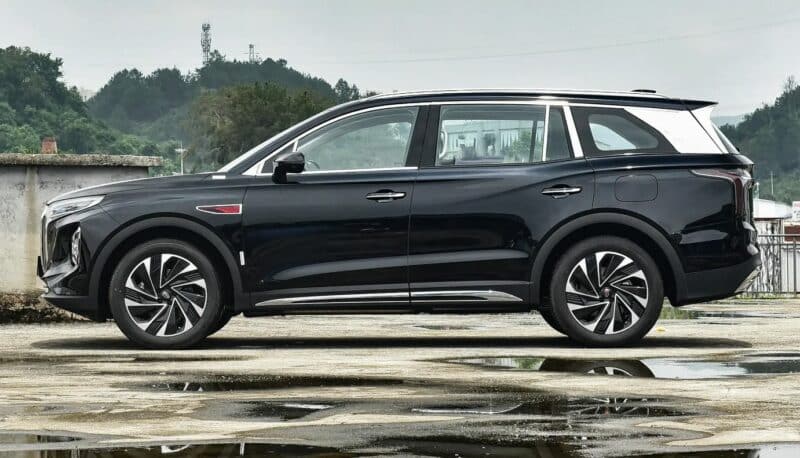This is Hongqi’s upcoming HS7 PHEV SUV. Its pre-sale will start on July 11 in China, available in two-wheel drive and four-wheel drive variants as well as six- and seven-seater layouts. Currently, the gasoline-powered variant of the Hongqi HS7 is already on the market.





In the exterior design, the PHEV variant remains largely unchanged compared with the gasoline-powered variant. The front face retains the straight waterfall-style grille and chrome decorations. At the rear, the through-type taillights are forked on both sides, with red light strips on the black lower section inlaid with a chrome strip in the center. There are also dual exhaust outlets on both sides and a “PHEV” tail label.

The Hongqi HS7 PHEV (see spec here) measures 4995/1960/1760 mm, and the wheelbase is 2920 mm, positioned as a medium-to-large SUV. The side features a floating roof design, silver roof racks, chrome outlined windows, traditional door handles, a Hongqi logo under the A-pillar, 20-inch five-spoke rims, and a charging port on the left and right rear fenders, highlighting the car’s positioning as a plug-in hybrid vehicle.

Inside, the overall layout is consistent with that of the gasoline-powered version. At first glance, the vertical large central control screen is eye-catching, coupled with a three-spoke steering wheel, an LCD instrument panel, and a bulky gear lever. The specific dimensions are subject to the official announcement. At the same time, the center console is equipped with a wireless charging panel and a hiddle cup holder.



Additionally, the seats are wrapped in leather materials. The front seats support multi-angle electric adjustment while both the front and rear seats are equipped with heating, ventilation, and massage functions.

Power comes from a plug-in hybrid power system consisting of a 2.0L naturally aspirated engine and an electric motor (model CA4GC20TDH-42), paired with CATL’s 20.14 kWh ternary lithium batteries. The engine has a maximum power of 163 hp and the top speed is 180 km/h. The two-wheel drive variant has a pure electric range of 92 km, and the four-wheel drive version has a pure electric range of 83 km (assuming it is CLTC). Furthermore, the two-wheel drive has a fuel consumption of 5.98L/100km while the four-wheel drive consumes 6.32L/100km.
Source: DongCheDi, AutoHome, CNFOL



